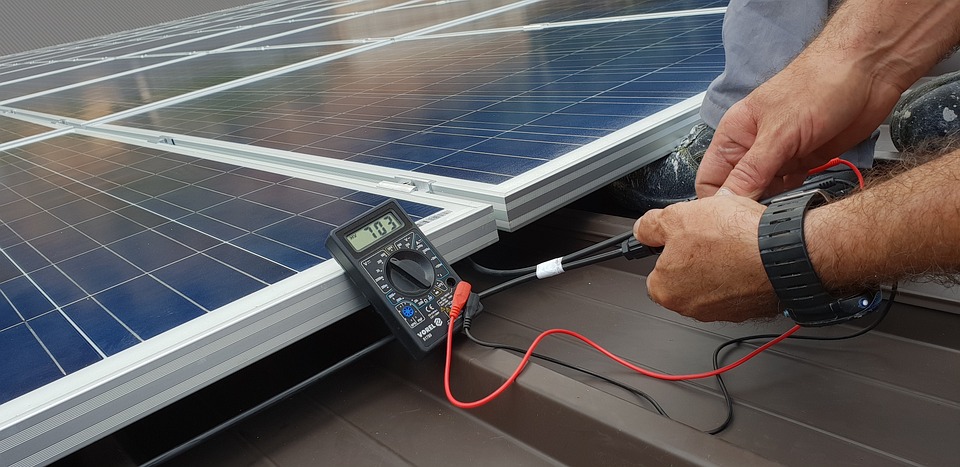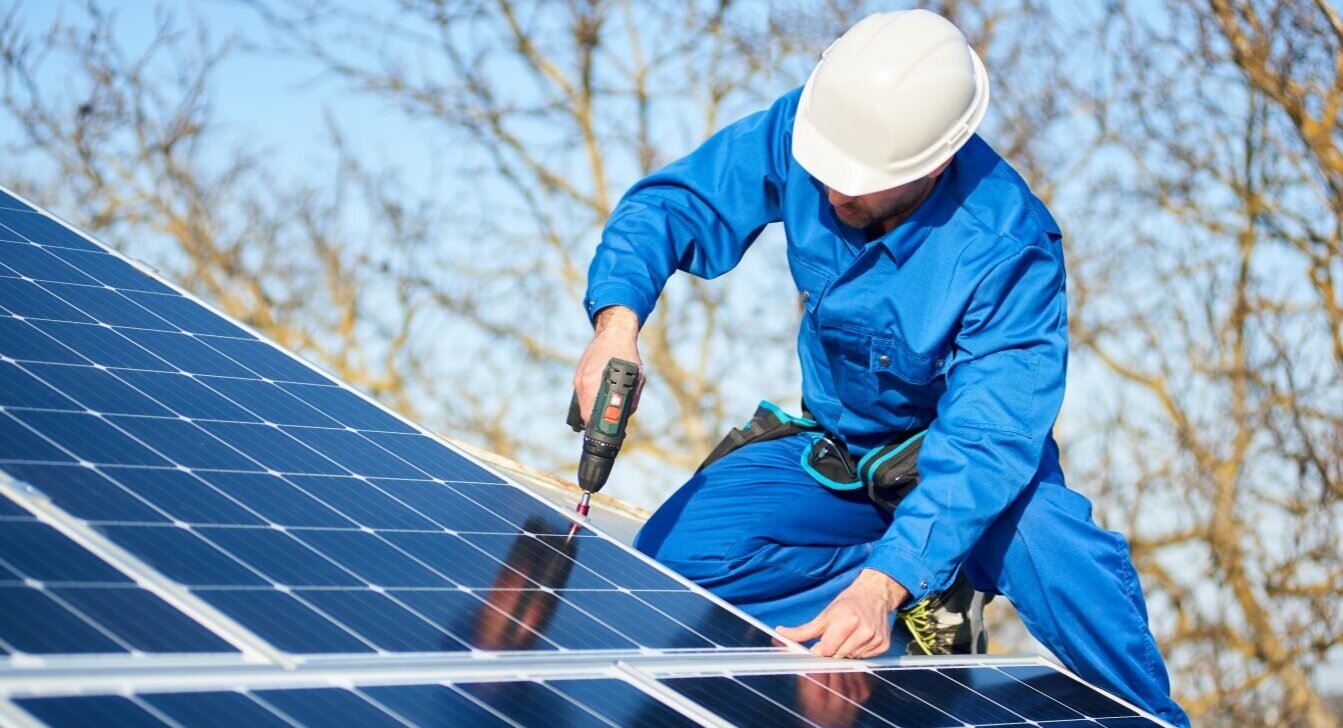Solar Energy Suppliers: A Environmental Impact of Photovoltaic Panel Installation
Custom Solar Systems: Expert Setup Of Photovoltaic Systems Can Significantly Lower Your Energy Costs
Site Evaluation and Preparation
Unveiling the Land: Where Solar Dreams Begin
Before the sun's energy can be harnessed, a precise website evaluation must unfold. Envision strolling onto your residential or commercial property and wondering, "Is this spot genuinely the golden ticket for solar panels?" This is where science fulfills intuition. Evaluating the land includes more than just looking for sunshine; it's about understanding how the environment will dance with your system throughout the year.
Secret Elements in Site Assessment
- Sunlight Exposure: Are shadows from trees, structures, or chimneys lurking where you plan to set up? Even a little shadow can whisper away valuable watts.
- Roof Orientation and Tilt: South-facing roofs normally take the show, however east or west can still play their part wonderfully. The angle of your panels can change morning chills into afternoon warmth.
- Structural Stability: Is your roofing system a fortress ready to support solar panels, or does it require some strengthening? This step is vital to avoid surprises after installation.
- Space Accessibility: Sometimes, the very best area isn't on the roofing at all. Ground-mounted systems use versatility but require a different type of groundwork.
Preparing the Canvas: Website Readiness
As soon as the perfect place is identified, preparation starts. Consider it as setting the stage for a grand performance. The roofing might need repairs, or trees may require a gentle trim. Clearing debris and making sure the surface is tidy are little however significant steps that lead the way for ideal panel positioning.
Steps to Prepare Your Site
- Conduct a comprehensive shading analysis using specialized tools or apps.
- Examine and strengthen the roofing system structure, if essential.
- Clear barriers that may block sunlight, consisting of overgrown branches.
- Strategy electrical wiring routes and inverter positioning to optimize effectiveness and safety.
- Acquire any necessary permissions or approvals for structural modifications.
Why Does This Matter?
Consider the story of a property owner who excitedly installed panels without thorough website evaluation, just to find power generation inconsistent. The offender? A single chimney casting a shadow in the late afternoon, decreasing output when energy demand peaks. This highlights an important fact: the sun is predictable, however our surroundings are not. Every nuance matters.
In the end, the preparation phase is the silent designer of success. It turns raw capacity into concrete, tidy energy. When contemplating solar panel installation, ask yourself: Have I truly read my property's solar story? Since because story lies the trick to sustainable power.
Exploring the Varieties of Solar Panels
Ever based on a roofing and questioned why some photovoltaic panels shine like black mirrors while others sparkle with a bluish tint? The secret depend on their material structure, which considerably influences performance and installation methods. 3 main types control the marketplace:
- Monocrystalline panels: Crafted from a single crystal structure, these are the champs of performance, typically boasting rates above 20%. Their uniform black look is smooth but needs accurate setup to maximize performance.
- Polycrystalline panels: Made from several silicon fragments melted together, they offer a speckled blue appearance. A little less efficient than monocrystalline but usually more flexible in setup subtleties.
- Thin-film panels: These are flexible, lightweight, and less interfering, thanks to their amorphous silicon or other products. Their lower efficiency implies more surface area is needed-- a considerable consideration when planning roof layouts.
Material Matters: Beyond Silicon
Silicon reigns supreme, but did you know that the substrate and encapsulants can make or break the panel's longevity? Glass with high transmittance, resilient polymers, and advanced anti-reflective finishings are subtle heroes. A poorly chosen encapsulant can cause premature yellowing, sapping energy output over time. It's a peaceful battle of materials that a lot of installers ignore until efficiency dips.
Installation Insights: What the Pros Know
When installing panels, the weight difference between types matters. Thin-film panels weigh less, reducing stress on older roofing systems. However, their bigger size demands more meticulous circuitry and support style. Monocrystalline panels, though much heavier, can be spaced tighter, optimizing roofing genuine estate. Here's a quick rundown of specialist suggestions:
- Confirm panel weight and roofing system load capability before selection.
- Consider thermal growth rates of panel materials; mismatches can cause micro-cracks.
- Select mounting hardware compatible with the panel's frame material to avoid deterioration.
- Usage reflective support products to magnify light capture in shaded areas.
Enjoyable Reality: The Anecdote of the "Blue vs. Black" Dispute
One installer when told me about a client who insisted on blue panels simply for visual appeals. Months later, the customer observed a slight dip in energy production compared to their next-door neighbor's black monocrystalline setup. This story echoes an axiom: often, what looks good does not constantly carry out finest. With the ideal angle and setup, even polycrystalline can shine.
Installation Process and Methods
Picture raising a panel onto your roof for the very first time. The dance between precision and persistence begins here. The solar panel setup procedure isn't practically bolts and brackets; it's a mindful orchestration of angles, weights, and weather considerations. Have you ever contemplated how a small misalignment can shave off precious energy production? That fraction of a degree can be the difference in between a successful system and one that underperforms.
Step-by-Step Installation Insights
- Website Assessment: Before any equipment touches your roofing system, the evaluation stage includes evaluating roofing orientation, shading elements, and structural integrity. This action goes beyond the surface area-- actually. Knowing the roof's load capability is important to avoid surprises later on.
- Installing Setup: The choice in between flush mounts and adjustable racks depends upon your roofing system type and sun direct exposure. Adjustable racks provide an ace in the hole-- fine-tuning angles seasonally to capture optimum sunshine.
- Panel Placement: Panels need to be spaced and secured to avoid thermal expansion problems and water pooling. Ignoring this can result in distorted panels or leakages, a subtle but costly oversight.
- Electrical Links: Electrical wiring is where lots of installations falter. Utilizing correct gauge wires, safe ports, and water resistant junction boxes guarantees longevity and safety. Ever seen a panel system underperform since of loose or rusty connections? It's more typical than you may believe.
- System Testing: Conducting an extensive efficiency check post-installation can catch issues before they intensify. Voltage tests, inverter performance, and monitoring software calibration are non-negotiable actions.
Pro Tips for Optimum Setup
- Think about microinverters or power optimizers to mitigate shading effects and maximize output from each panel.
- Incorporate a grounding system carefully to prevent electrical noise and secure versus lightning strikes.
- Use corrosion-resistant mounting hardware, particularly in seaside or humid environments, to extend system life-span.
- Apply weatherproof sealants at every roofing penetration to avoid future leaks-- a tiny lapse can cause decades of water damage.

The Often-Overlooked Components
Numerous installers overlook the subtle impact of roofing pitch and seasonal sun angle variations. For example, a flat roofing system setup may take advantage of slanted racks angled differently for winter and summer. This versatility can improve annual energy yield by up to 15%. The synergy in between panel spacing and air flow is important. Panels that are too close together can trap heat, lowering effectiveness-- a nuance that only seasoned installers appreciate.
| Setup Aspect | Expert Insight | Common Oversight |
|---|---|---|
| Installing Type | Adjustable racks enable seasonal angle modifications. | Utilizing fixed mounts on flat roofing systems. |
| Electrical Wiring | Proper gauge and water resistant connectors make sure durability. | Neglecting waterproofing results in rust. |
| Panel Spacing | Adequate space enables heat dissipation. | Panels too close cause overheating. |
Precaution and Finest Practices for Photovoltaic Panel Installation

Ever tried stabilizing on a roofing system while juggling sharp-edged photovoltaic panels? It's not exactly a Sunday stroll. The most neglected element during photovoltaic panel setup is the careful attention to safety procedures that keep installers alive and well. The dance between weather condition, electrical power, and heights requires a near-militant discipline.
Important Safety Equipment: Your First Line of Defense
- Non-slip shoes: Slipping on a slick roof can turn a routine task into a tragedy.
- Harnesses and lanyards: Appropriate fall arrest systems are non-negotiable.
- Insulated gloves: Secure against electric shocks, specifically when dealing with live wires.
- Protective glasses: Guard eyes from UV rays, dust, and flying particles.
- Construction hats: Roof work suggests unforeseen bumps-- don't ignore falling items.
One skilled installer when shared how an easy gust of wind nearly sent out a panel-- and himself-- plummeting. Solar Installers In My Area That close call reinforced why double-checking harness connections isn't simply treatment; it's survival.
Pre-Installation Preparation: A Blueprint for Security
Before stepping on the roof, an extensive website examination is essential. Are the shingles breakable? Is the roofing system pitch alarmingly high? These elements determine the kind of safety equipment required and the installation technique. Ignoring them invites disaster.
Consider the electrical design too. Solar arrays link to inverters, breakers, and home wiring-- all prospective shock risks if mishandled. Identifying circuits plainly and de-energizing systems when possible decreases threat tremendously.
Best Practices to Prevent Typical Dangers
- Weather condition check: Avoid setup during rain, snow, or high winds. Wetness combined with electrical energy is a dish for disaster.
- Tool management: Protect tools with lanyards or tool belts. Dropped tools can hurt individuals listed below or damage panels.
- Two-person guideline: Never work alone on roofs. An extra set of eyes and hands can be a lifesaver.
- Clear communication: Develop hand signals or walkie-talkie systems when verbal cues get lost in wind or range.
- Panel handling method: Constantly lift panels with knees, not back, to prevent stress and preserve control.
Electrical Safety: Beyond the Basics
Numerous underestimate the intricacy of DC voltage created by panels. Unlike a/c, DC arcs are harder to snuff out, making arc fault protection gadgets essential. Comprehending the circuitry schematic thoroughly before touching anything can avoid electrocution.
| Security Component | Pro Idea | Why It Matters |
|---|---|---|
| Harness Evaluation | Look for wear before each usage | Used harnesses can stop working during a fall |
| Panel Orientation | Plan layout to decrease awkward lifts | Prevents muscle injuries and panel damage |
| Electrical Seclusion | Use lockout/tagout procedures | Guarantees power is off throughout circuitry |
Does the thought of working with high-voltage DC make you stop briefly? It should. Respecting the unnoticeable forces in play and getting ready for them with the right security frame of mind changes a risky job into a workable one.